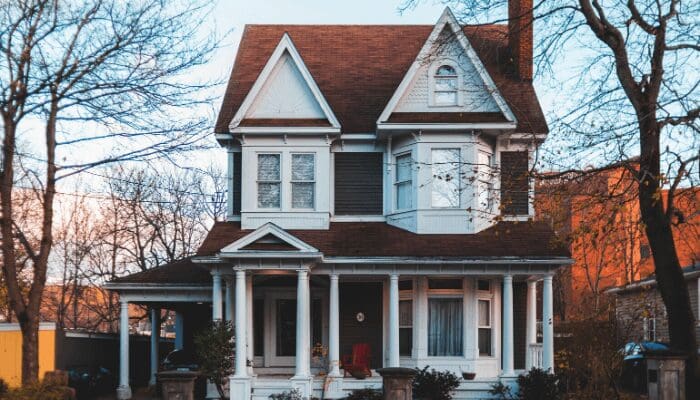What to Look For When Buying a House: Real Buyers Share Their Regrets
- Published on
- 4 min read
-
 Emma Diehl Contributing AuthorClose
Emma Diehl Contributing AuthorClose Emma Diehl Contributing Author
Emma Diehl Contributing AuthorEmma's work has been featured in Huffington Post, NPR and XOJane. When she's not combing her neighborhood for open houses, she's writing about technology, real estate or data.
“I love my house, but I wish I would’ve paid attention to…”
HomeLight connected with over 20 first-time and repeat buyers to ask about their recent home buying experiences. Kid you not, this is the response we heard from virtually everyone.
A recent survey of 2,668 adults, which found that 44% of homeowners have regrets about their home purchase, echoes a similar sentiment.
But every buyer should be part of the 56% who can say “I love my house,” period… no ifs, ands, or buts about it. We recommend that you start with a healthy dose of skepticism and this universal list (featuring stories from real buyers) of what to look for when buying a house. Spoiler: you won’t find rainbows and unicorns justifying your dream home purchase. We’re here to give you the nitty gritty.

1. Wall stains: Is that…water damage?
As you tour homes, observe the condition of the walls and ceilings of every room you enter. If you spot discoloration or mysterious stains on any surfaces, you can’t assume it’s an architectural birthmark or “quirk” of the house. In reality, you could be looking at serious signs of current or past water damage.
Considering that water can damage your furniture and appliances, cause wood rot, and increase the risk of mold growth, good ol’ H20 is absolutely a home’s public enemy no. 1. And it’s more common than you’d think: 37% of homeowners have suffered losses due to water damage, while 98% of basements deal with water issues at some point (so you’d better pay special attention to the lower levels).
Next steps:
Ask your top local real estate agent to investigate the stain and scan the seller’s disclosure form to see if the owners mentioned the issue anywhere.
Water damage comes in lots of different forms—having it in the house isn’t necessarily a dealbreaker, but the more you know coming in, the less risk you’ll take on.
The home inspector can give you a better idea of the extent of the damage and might be able to ballpark the cost of repairs. With a copy of the home inspection report in hand, contact an experienced water-damage contractor for a better estimate of repairs if necessary.
From there, work with your agent to decide whether to:
- Request that the sellers remedy the problem before closing
- Ask the seller for a repair credit (usually in the form of a check at closing) based on the estimated costs of repairs
- Lower your asking price accordingly
- Walk away from the deal if the issue is severe enough
True story:
Ling Thich and her husband purchased their home in Toronto during a real estate boom in 2014. She noticed a few water stains in the basement and ended up overlooking the seller’s mention of a minor leak in favor of staying competitive.
“At that time, we were emotionally invested and felt a little bit of FOMO,” Thich says. “Nowadays, our city has been raining more often than ever, so water comes in especially during the heavy rain period. It’s annoying that we need to look for a professional to remedy the issue.”
Had Thich addressed the damage upfront, she might’ve been able to make a lower offer, or at least addressed the leak before it damaged her home further.
2. Corroded or leaky pipes
You can tell if a pipe in a house is corroded if it’s turned bluish green (copper pipes) or reddish brown (steel pipes). Corroded pipes are not only a sign of aged plumbing, but old pipes also lead to leaks and can damage a home’s structure. In any home visit, you should check the following for signs of plumbing problems:
- Flush the toilets.
Take a minute to flush each toilet in the home to make sure it properly drains and refills. Take note of slow or running toilets post-flush. - Run the shower, watch the drain.
Test out the water pressure in each shower—if it’s low while just running a single fixture, you’ll get a better idea of pressure across the home. Then, wait to watch the shower drain. If it’s slow, the home could have backed up pipes. - Check out the water heater.
Any rust or damp spots around the heater could signal issues with the system. - Look for signs of leaks.
Peek under sinks and around toilets and water fixtures for visible problems with a home’s plumbing. Red flags include corrosion as noted above, as well as discoloration or soft spots on cabinet floors and walls, which could indicate pipe leaks or structural rot.
Next steps:
A home inspector will perform a visual inspection of a home’s plumbing systems. However, if your heart’s set on a property with older plumbing, a professional plumbing inspection or sewer inspection calls for a specially trained eye and can pinpoint any issues via diagnostic camera, giving you an idea of how old your home’s pipes are and how likely you are to face plumbing issues down the line. Experts recommend sewer inspections for homes that are 20 or more years old.
True story:
Seattle resident Conor MacEvilly regrets the decision to forgo a plumbing inspection for his 1932 Seattle home. Two months after he bought it, his basement flooded during a holiday party.
“The sewer line was backing up because the toilets were getting flushed way more than they had been for the previous 20 years,” MacEvilly explains. He was able to unblock the line for $400, but the replacement line came weeks later to the tune of a $15,000 bill.

3. Flood plain pains
Some homes are more likely to flood than others based on the topography and proximity to a body of water. Restoring a house flooded with just one inch of storm water can cost over $27,000, according to FEMA.gov, so it’s smart to know whether your home is flood-prone before you buy.
Next steps:
Keep an eye out for water stains in the basements or lower levels of the home, and check FEMA’s Flood Map Service Center to discover a home’s flood risk. According to FEMA, 13 million homeowners live in the high risk 100-year flood plain, which means they face a 1% chance of flooding during any given year. Under federal law, people with homes in high-risk areas with mortgages from federally insured or regulated lenders (this includes most nationally known financial institutions) must have flood insurance, so that’s an extra complication in the mortgage process.
If the home is situated near a creek or pond or area with a lot of rain historically, ask questions about the home’s past history of flooding or water intrusion to be on the safe side.
True story:
Brett Elron loves the home he purchased in 2015 just two hours north of New York City, but he’s discouraged friends and family from taking a look at the property just down the block from him because of its proximity to a flood plain. “During every heavy rain, the owners would have to worry about controlling the flooding so it doesn’t flow directly into their foundation or somewhere where it will further damage their home.”
4. Raggedy roof
If a home you’re considering has a roof that’s more than 25 years old; or shows signs of loose shingles, cracks or algae growth, it warrants further investigation—considering a new roof can cost between $3,000 and $12,000 and you’re kind of counting on it to keep you warm and dry.
Next steps:
If you’re not confident in the roof’s condition, ask the sellers to provide a roof certification, which is essentially a warranty that guarantees the roof will last a certain number of years (usually between two and five years). If an inspector finds the roof is truly on its last legs, the seller will have to make repairs to receive the certification.
True story:
Speaking from personal experience, Elron urges his friends to “consider hiring a company to use a drone to gather camera footage of the roof, to help get a full picture.” Technology like drones and camera extensions has made this in-depth inspection more affordable. On average, a close look at the roof will cost $205.

5. Cheap, drafty windows
Even if it’s warm outside and you can’t notice whether a home’s windows are drafty, check the condition of the window caulking or other red flags that a home’s windows are in poor condition, like decay or wood rot around the frame, or foggy glass.
Next steps:
Ask how old the windows are—if they’re more than 15-20 years old, or you note visible damage or wear and tear, it’s worth a closer inspection. Depending on the window quality and condition, you’ll want to consider negotiating a repair credit or price reduction for window replacement.
True story:
New Yorker James McGrath bought his first home in the summer, but when winter arrived his low-quality windows made his home frigid, leading to high heating bills and frustration.
“The drafts would have been difficult to assess when it was warmer out but the general quality of the windows is something buyers should check out before submitting an offer,” McGarth suggests. “I ended up replacing the windows at $3,000/each and would still have made the purchase, but that’s a home improvement that buyers don’t often notice and can save you a lot of money if you do.”
6. Road noise and busy corner lots
The time of day you visit a property can dramatically change your opinion of the lot and the surrounding area. A slow Saturday afternoon may look different than the bumper-to-bumper traffic of Thursday rush hour. Make sure you know everything about a home’s location before you take the plunge. You can always change outdated floors; you can’t so easily pick up a house and move it from point A to B for quieter sleeping.
Next steps:
Visit the area during different times of the day and night to fully understand the location. Walk around the blocks close to your home; does it feel welcoming?
True story:
“I purchased a home in an area with lots of freeway noise but didn’t notice this until my final walkthrough,” shares Sacramento loan originator Matthew Yu. “When I toured the property initially there was music and air conditioning that muffled the sound.”

7. Multiple sets of stairs
Google named ranch-style homes the most popular style of summer 2019, signaling the single-level lifestyle is back in a big way. Running stairs might be great cardio, but a home with too many levels can be a burden long-term, especially if you have plans to age in place.
Next steps:
While on the property, move from the top to bottom floor a few times. Now imagine carrying a clothes basket between levels. If you’re already annoyed or tired out, it might be time to walk away.
True story:
Crystal North started to regret the townhouse her family moved into in Illinois after the first laundry day: “This home has two flights of stairs. I have to carry laundry from our bedrooms on the top floor down two flights of stairs to the basement. We have a toddler and a dog, so there are also baby gates to step over,” North says.
What to look for when buying a house: Now’s your chance to be rigorous
When you think of what to look for when buying a house, images of great curb appeal, amazing views, and beautiful wood floors fill your mind. But if you can stay focused and make it through the boring stuff—and ask all the right questions with the help of your agent—you’ll move forward to the fun part with the great peace of mind that you looked under the hood of the car before you drove off the parking lot.
Header Image Source: (Marcus Lenk/ Unsplash)
